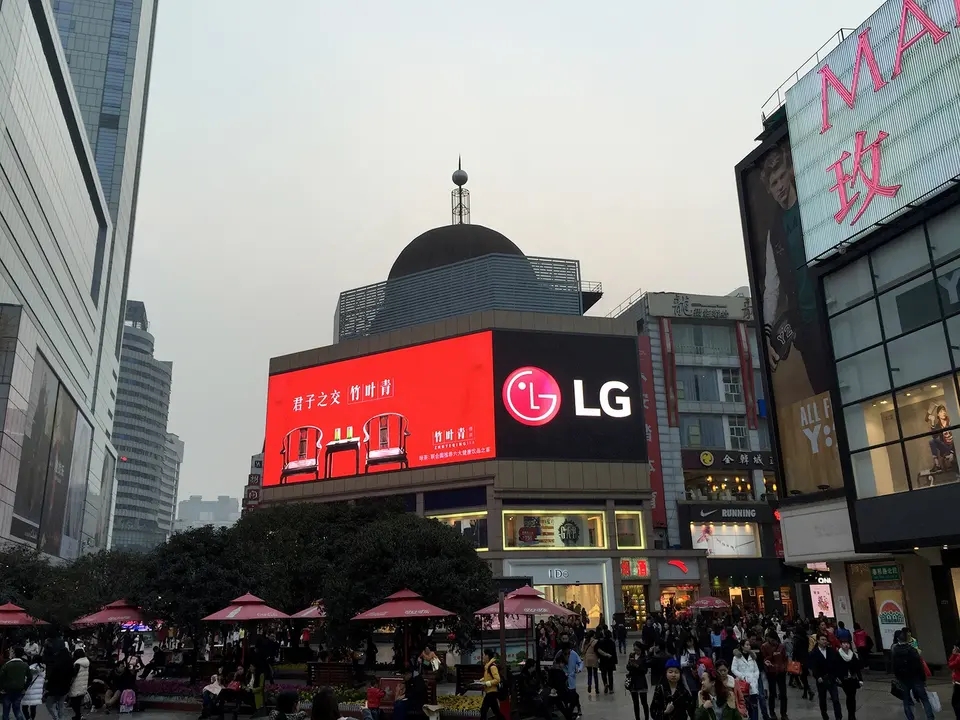Many consumers are faced with a dazzling array of full color LED displays and do not know how to choose. What kind of LED display screen is high-quality?
brightness
The brightness of the indoor full color LED display screen should be above 1800cd/m2
The brightness of outdoor full color LED display screen should be above 5000cd/m2
The brightness of outdoor LED strip screens should be above 2000cd/m2 to ensure the normal brightness requirements of LED display screens, otherwise the displayed content may not be clear due to low brightness. The brightness is mainly determined by the quality of the LED tube.
viewing angle

The larger the visual angle, the better. The size is mainly determined by the packaging method of the tube core.
Flatness
The surface flatness of the LED display screen is within ± 1mm, ensuring that the displayed image does not distort. Local protrusions or indentations can cause blind corners in the visual angle of the LED display screen. The flatness is mainly determined by the production process.
Color authenticity
Color restoration refers to the ability of LED display screens to restore colors, which means that the colors displayed on the LED display screen must be highly consistent with the colors of the playback source, in order to ensure the authenticity of the image.
white balance
The white balance effect is one of the most important indicators of LED display screens, mainly determined by the LED display screen control system, and the tube core also has an impact on the color restoration.
chromatic aberration
The presence or absence of color blocks refers to the significant color difference between adjacent LED modules, and the color transition is based on the module. The phenomenon of color blocks is mainly caused by poor control system, low gray level, and low scanning frequency.
Is there any mosaic or dead center phenomenon
Mosaic refers to the small four squares that appear on the LED display screen to be constantly bright or dark, which is the phenomenon of module necrosis. The main reason for this is the poor quality of the connectors used in the LED display screen.
Dead spots refer to the individual dots that appear on the LED display screen that are constantly on or off, and the number of dead spots is mainly determined by the quality of the tube core.
Grayscale level: Grayscale level is the technical processing level of LED display screens from darkest to brightest. The higher the grayscale level, the richer the colors, and the more vibrant the colors are; The more delicate the screen, the easier it is to express rich details. At present, LED display screens in China mainly use an 8-bit processing system, which means 256 (28) grayscale. Simply understood, there are 256 brightness changes from black to white. Using RGB three primary colors to create 256 × two hundred and fifty-six × 256=16777216 colors. It is commonly referred to as 16 megacolors.
Refresh frequency: The refresh frequency refers to the number of times the LED display screen is repeatedly displayed by the display screen. In theory, the higher the refresh frequency, the better the display effect. Generally speaking, in the series of civilian or commercial LED display screen products, the indoor LED display screen refresh frequency is greater than 180Hz, and the outdoor LED display screen refresh frequency is greater than 300Hz.
Display density
Outdoor full color display screens are divided into several types based on their size and processing density, including P40, P31.25, P25, P20, P16, P18, P14, P12, P10, etc. When selecting them, it is necessary to consider the principle of matching the luminous density with the actual radiation range.
Display screen driving mode
The driving mode of outdoor full color LED display screens is constant current driving, which can be divided into static and dynamic modes. The dynamic method reduces circuit density, reduces costs, and is beneficial for heat dissipation and energy conservation; The disadvantage is that the brightness is reduced.
Full color LED display screen pixels
In the market, full color display screens are divided into two types based on the different midpoints: real pixels and virtual pixels. The principle is to determine whether adjacent pixel points use the same physical pixel LED tube.
When selecting an LED full color display screen, special attention should be paid to whether it is a physical pixel.
Full color LED display screen box quality
With a high-quality internal structure, it is also necessary to have a sturdy external support, which requires a full color display box. A sturdy box should have a thickness of over 1.2mm and be designed with wind and sand resistance, high temperature resistance, fast heat dissipation, waterproof, and lightning protection.
product design
There are various types of full color LED displays, including indoor and outdoor energy-saving, high brightness, high refresh, and portable products. The requirements for LED displays vary from industry to industry. Therefore, when distinguishing the quality of LED displays and selecting LED displays, buyers need to choose according to their actual needs.
